
Did you know humans process visual information in as little as 13 milliseconds? According to MIT studies, images, logos, colors, and typefaces can be recognized by customers in the blink of an eye, making visual language a powerful instrument in achieving marketing, advertising, and branding goals.
Brand imagery is the cornerstone of the visual language. It is the primary tool to present the company across diverse communication channels, foster positive and authentic associations with its personality and products, and build a loyal client base, strengthening its position in the oversaturated market.
Let's examine the brand imagery more to understand the concept, its role in the company's success, and the steps that lead to an informed decision about selecting visual elements for your current campaign.
Defining Brand Imagery
Brand imagery is an umbrella term encompassing all tangible visual elements and intangible yet perceived by sight aspects of brand identity across communication channels, customer interactions, and touchpoints. This includes logotypes, mascots, photography, illustrations, icons, color palettes, typography, visual aesthetics, style, and emotions.
As a tool to reflect the company's personality and charisma, brand imagery capitalizes on one of the most vital human senses – vision. It captures and retains attention faster than other senses, offering the company multiple benefits like increased engagement, improved memorability, and effective communication of the brand's message, mission, and vision.
Why Brand Imagery Matters?
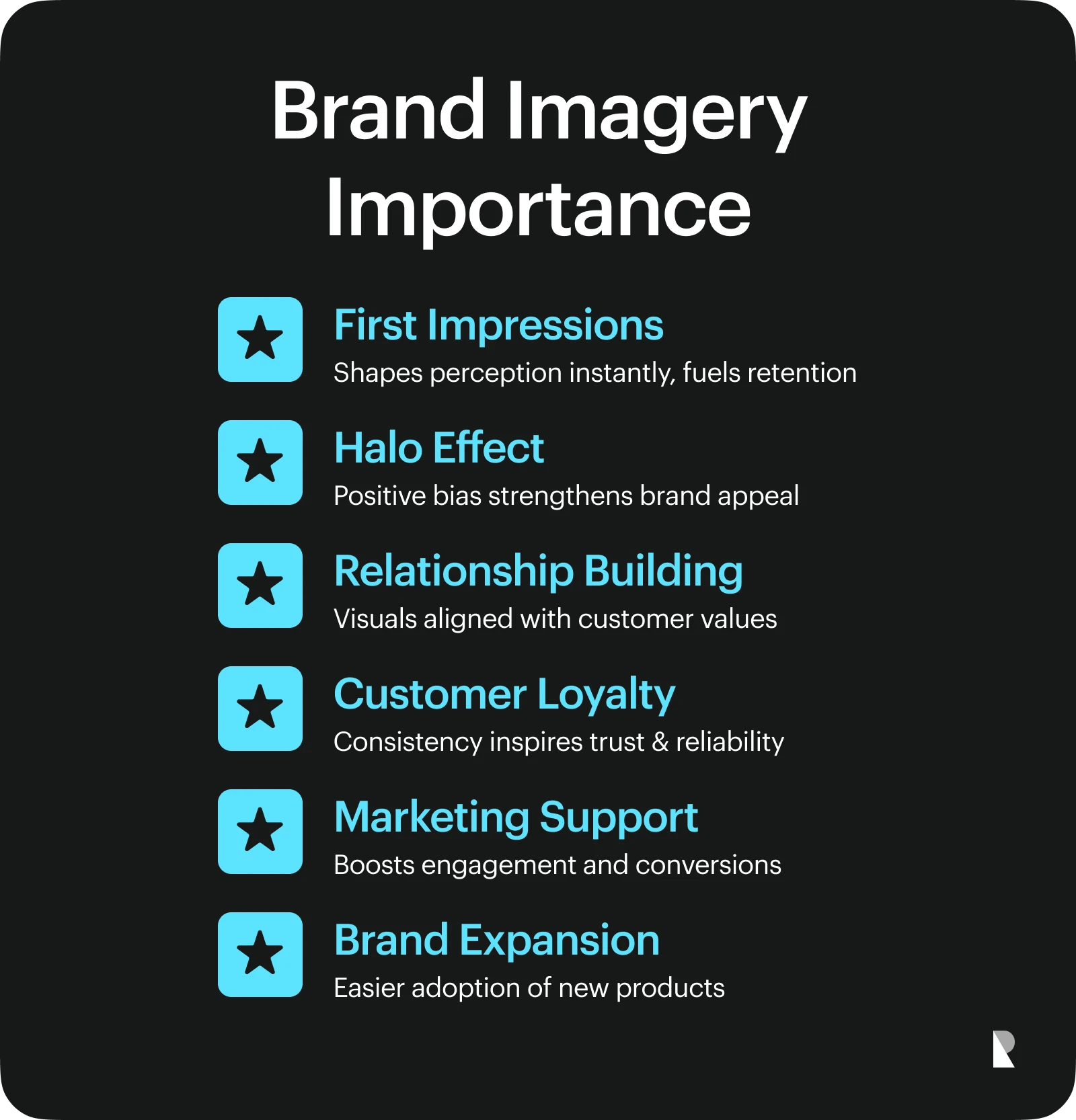
Underlying a strong foundation for implementing marketing, advertising, and branding strategies, visual identity imagery is hugely important for companies regardless of age, scale, niche, audience, and product. Not only is it a tool that reflects the company's personality in the market, but most importantly, it is the cornerstone of associations consumers make with every interaction. It matters for many reasons, and the most crucial are the following.
Produces the first impression
Formed incredibly quickly (it takes less than a second, according to studies), the first impression is surprisingly influential. It stands behind the primacy effect (the cognitive tendency to remember the first thing we see), the Halo effect (optimistic assumptions and feelings towards the brand), and the formation of lasting memories that fuel retention.
Although you cannot control the first impression, you can influence it through multiple factors. Brand imagery enters the game here and ensures the first encounter with your organization has a powerful start on which you can build. Together with a professional brand identity agency, you can create a strong foundation for your campaigns from the first second.
Strengthens relationships and fosters customers' loyalty
Speaking to your audience in the same language is the best way to establish strong and healthy customer relationships. Consistent and coherent brand imagery aligned with the client's values is the best way to achieve this. Visually supporting your constant devotion to addressing customers' needs makes the brand appear reliable. This encourages retention, cultivates loyalty, inspires trust, and leaves a long-lasting, meaningful impression.
Supports marketing and advertising efforts
Brand imagery enhances the impact of marketing and advertising efforts. Capitalizing on its optimistic assumptions and strong emotional connection drives engagement, makes consumers more receptive to campaigns, and ultimately fuels conversions. Additionally, the positive associations created by visual identity make introducing new products, services, and updates easier, increasing the likelihood of purchase and retention.
Brand Imagery vs. Brand Image, Logo, Personality
As an umbrella term, brand imagery encompasses key aspects of a company's visual identity, including image, logo, and personality. Let's clarify the differences and connections between these concepts.
Brand imagery vs. Brand personality

Brand imagery and brand personality are two closely related terms. Brand personality is a business persona that employs human-like characteristics to describe a company's intentions, meaning, purpose, goals, vision, mission, ideology, emotional constituents, and charisma. It underlies psychological and behavioral patterns and decision-making, remaining consistent and unique over the company's lifecycle.
Brand imagery, in turn, is a tool for reflecting brand personality and presenting it in the market across communication channels and touchpoints. It gives the company visual tools to deliver its key message, evoke emotions, and express itself.
Brand imagery vs. Brand image

Brand imagery and brand image are deeply connected and often used interchangeably, but they differ.
Brand imagery is an umbrella term that encompasses tangible and intangible aspects of a company's visual presentation in the market, such as logotype or type family. In contrast, brand image is a customer's perception and overall impression of the company. It could also encompass experiences, reactions, responses, and associations with the company and its products. Together, they work towards a strong brand identity.
Brand imagery vs. Logo

Brand imagery and logotype are closely related concepts that are often confused and used interchangeably. Indeed, they are connected as the brand logotype is an integral part of brand imagery. It plays a crucial role in visual identity, underlying almost all the company's marketing, advertising, and branding strategies. It can be seen across various presentation means, such as websites, social media, digital newsletters, posters, stationery, physical business cards, etc.
Therefore, the main difference between brand imagery and logotype is that the former is a general term, whereas the latter is an integral part.
Types of Brand Imagery
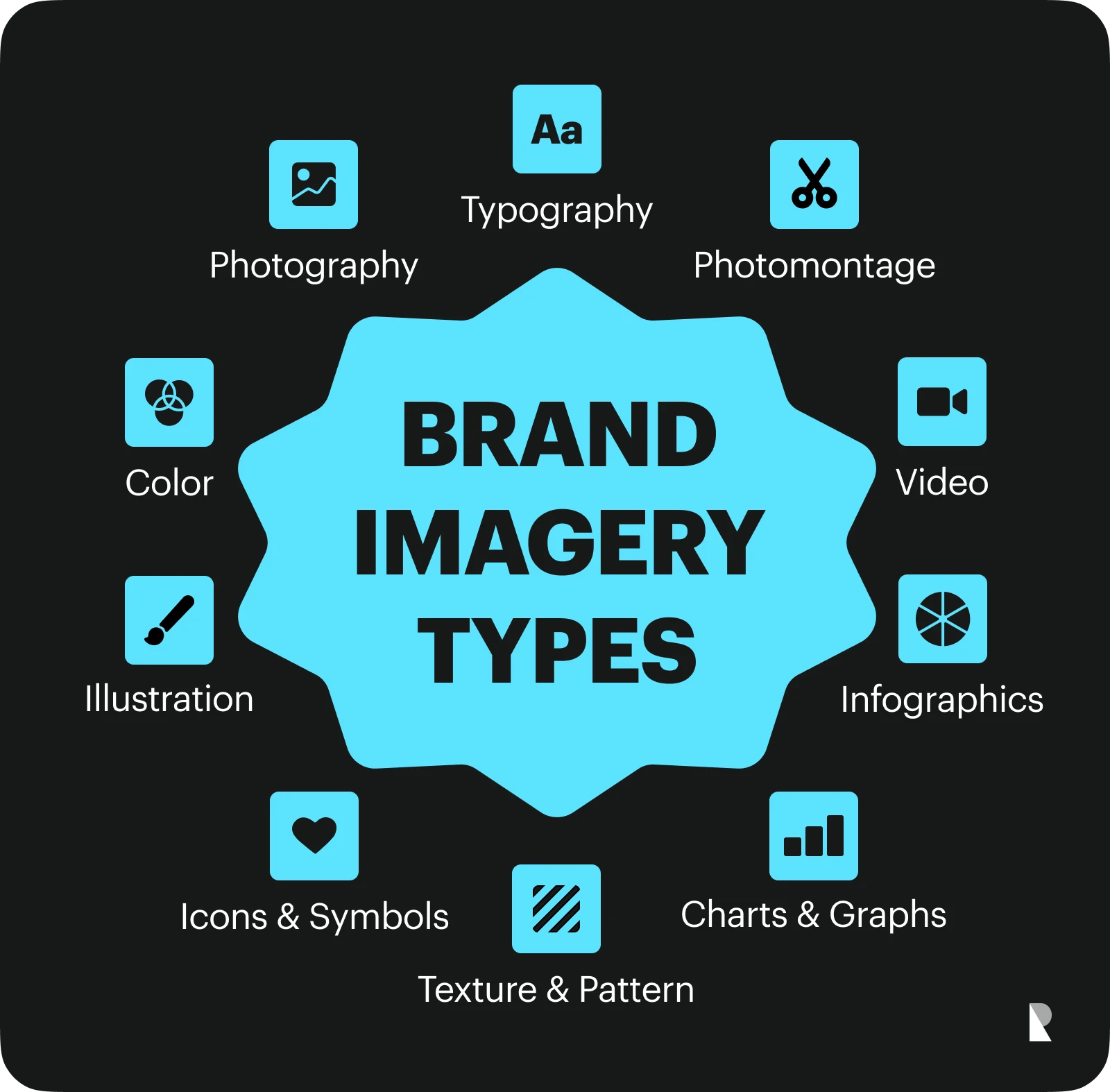
Going beyond your company's and customers' aesthetic preferences, brand imagery performs several crucial tasks to present the business's authentic identity and create strong and positive associations with its activity across channels. It is not only a logotype but a range of diverse visual elements that allow the brand to work its personality and charisma into multiple marketing and advertising campaigns, reinforcing an authentic feel.
Photography
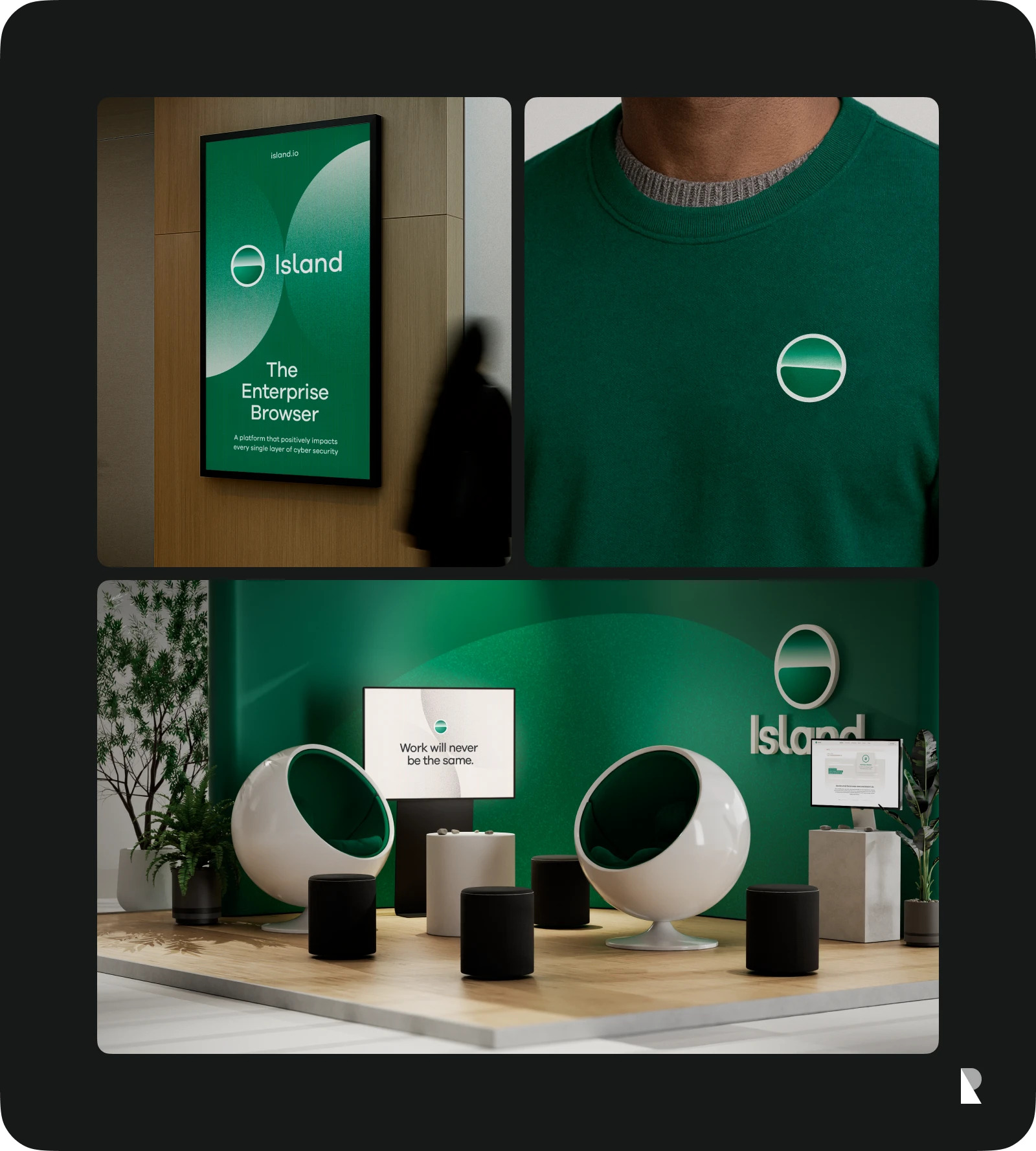
Brand photography is not some random stock image featuring an overly posed scene bought in a royalty-free content market. It is the art of creating a custom professional photograph that feels like the company in every detail, from styling to story. Through scenes, coloring, background, and other subtle aspects, it conveys the brand tone and reflects a specific mood and emotions.
Brand photography is created with the help of brand-aligned styles and guides. It is based on moodboards and centered around the company's personality and charisma. It also provides flexibility and can be used with other solutions or brand image items.
Illustration

Brand illustration is a unique approach to creating images with a specific purpose, such as visually reflecting the company's personality, mission, or vision, conveying its values, or establishing an emotional connection. As a rule, it tells a story in a fanciful way. It is focused, intentional, clean, and authentic, communicating overall brand messaging and making crucial client information more understandable and accessible.
One of the key benefits of using brand illustrations lies in their ability to humanize and hyper-personalize the connection and message delivery. It also helps to clarify complex ideas, increase memorability and brand recognition, and separate the company from its rivals in an engaging way.
Photomontage
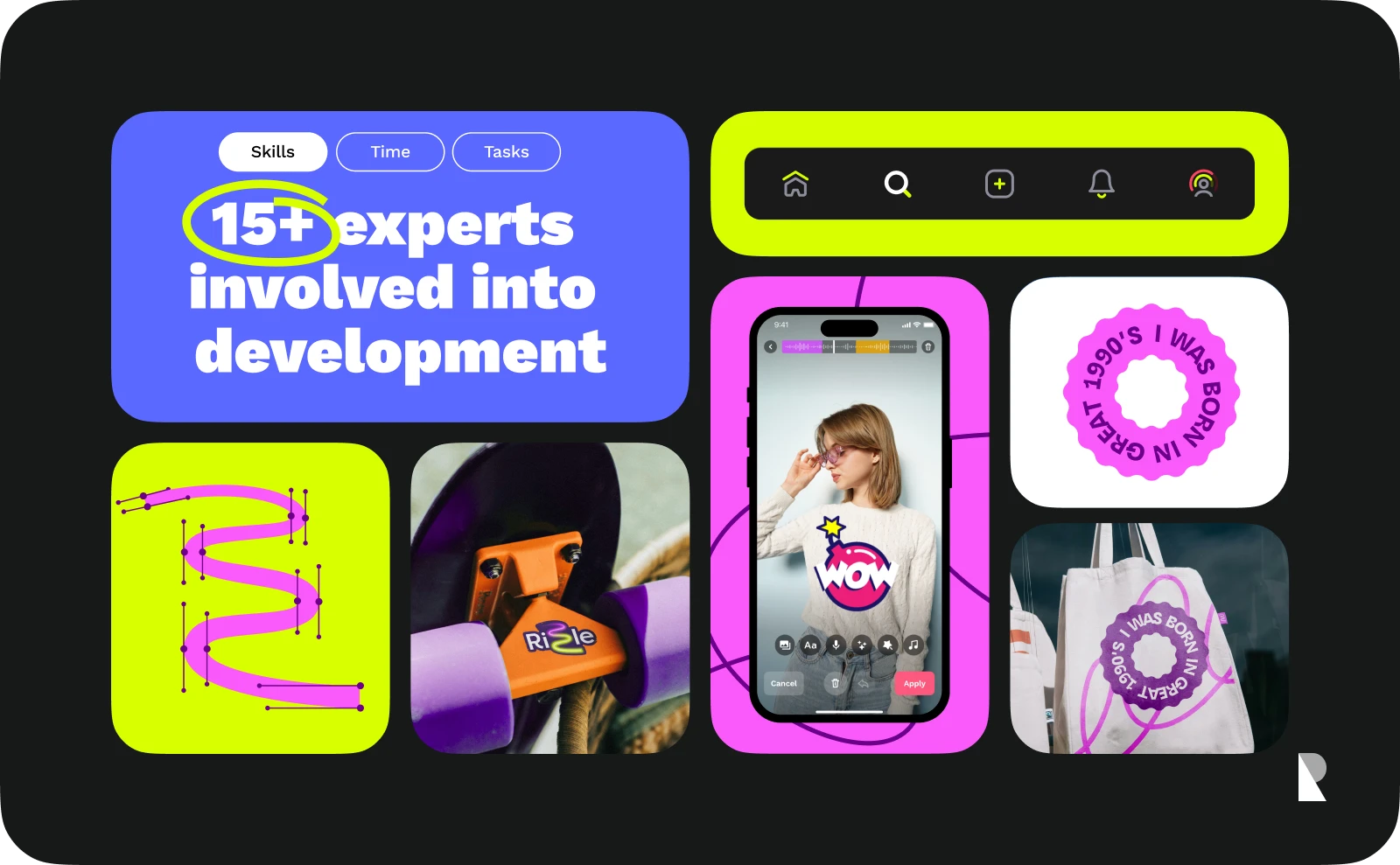
Brand photomontage is a unique artwork created through artful manipulation of two or more photographs, graphical elements, textures, patterns, and other visual items to capture the company's personality and mood. It is a composite photo that expresses complex narratives or imaginative scenes.
This type of brand imagery is famous for its creative value and unique visual styles that might accurately reflect the company's personality traits. It is primarily used to increase brand awareness, improve memorability, encourage emotional connections with the audience, or reinforce the company's social position in the community.
Infographics

A brand infographic is a visual artwork that simplifies complex concepts, communicates the brand message, or represents knowledge. It might combine multiple data representation elements, such as charts, tables, diagrams, graphics, images, illustrations, and concise text, to create a memorable, meaningful, and valuable storytelling experience enriched with the brand's personality and focused on the key message.
A practical and engaging brand infographic utilizes a distinct brand identity, incorporating visual elements such as colors, fonts, logos, mascots, tone, voice, and language. Presenting complex ideas in a digestible format excels at clarifying concepts, guiding users through tricky processes, or making onboarding enjoyable.
Icons and symbols

Brand icons and symbols are tiny yet mighty visual language instruments that allow a company to communicate and reinforce its message delivery. They evoke necessary feelings and fuel positive associations with the company and its products across multiple interaction points.
Despite their relatively small size, they are responsive, flexible, and accessible enough to adapt to different marketing and advertising campaigns, whether a mobile digital newsletter or a huge printed booklet for a conference. Representing the brand's values, they create instant brand recognition and foster emotional connection in the first and last impressions.
Charts and graphs
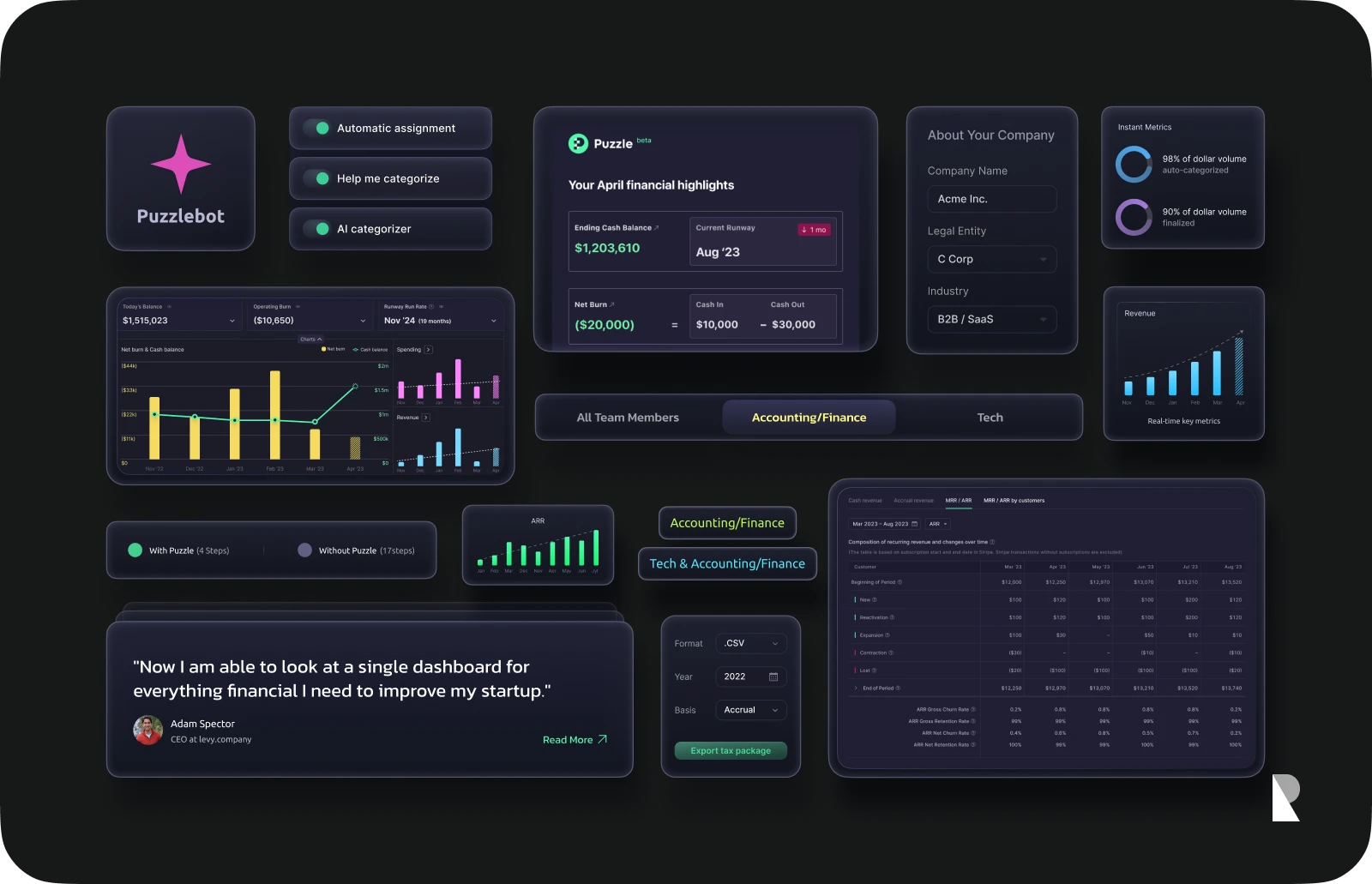
Brand charts and graphs are visual tools that summarize and organize complex and diverse brand knowledge or statistics into easily digestible pieces through well-structured graphical elements, such as bars, slices, data points, labels, and lines. Every detail aligns with the brand's visual style (color or fonts) to maintain consistency in communication and reinforce message delivery.
One of the most popular use-case scenarios for brand charts and graphs is presenting impressive statistics and facts about the company, highlighting the product's competitive advantages, explaining functionalities, showing trends, and simplifying comparisons between categories.
Color
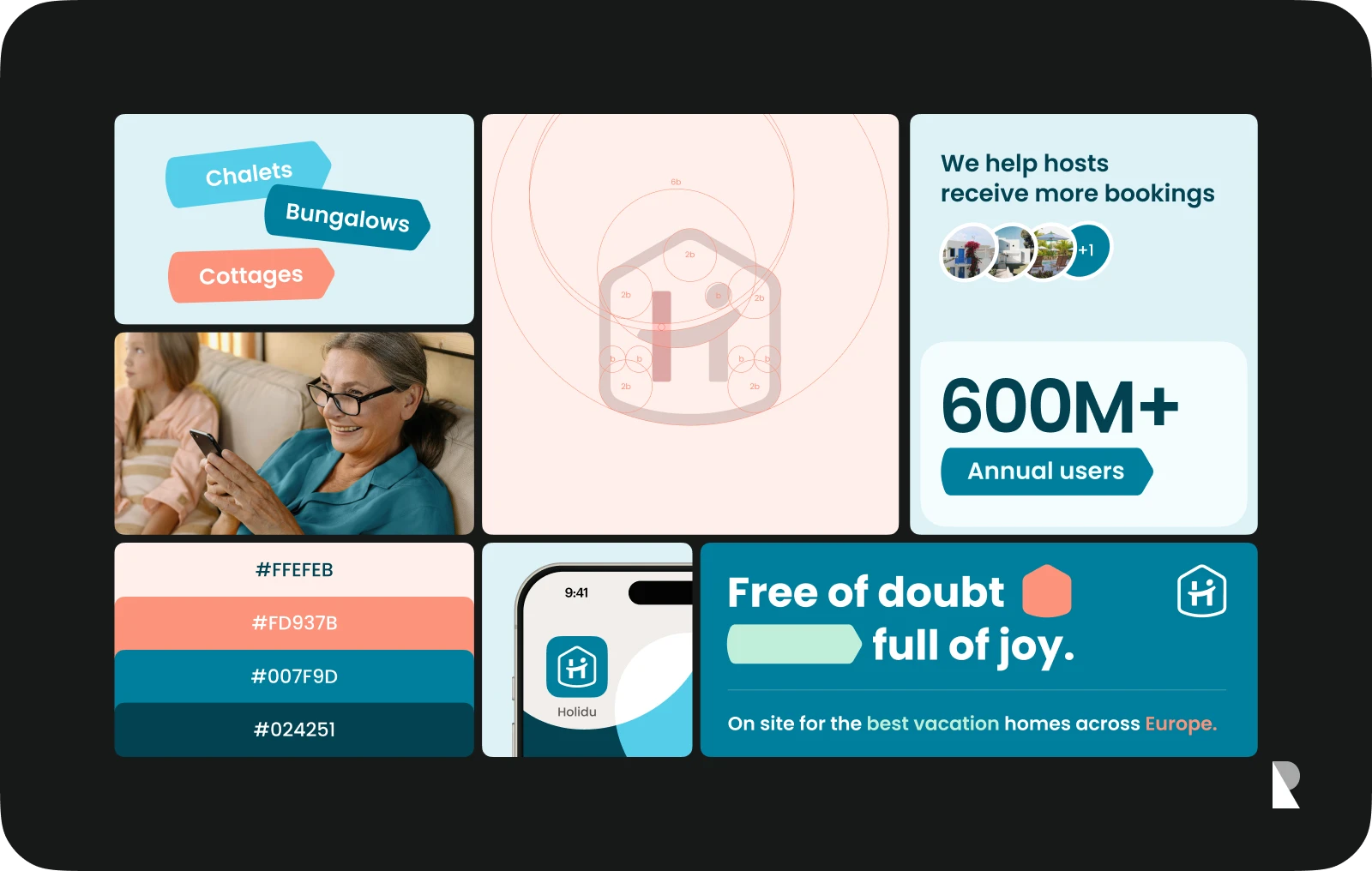
Brand color is an approved and universally consistent set of colors, shades, and tints that describe the company's unique personality and charisma. Based on color psychology, the color palette reflects unique brand identity characteristics, supports its behavior patterns, and hints at its mission, vision, and ultimate goal.
Color is critical in a brand's visual identity, recognition, and memorability potential. As one of the first aspects humans tend to see and understand, it delivers the key message in less than a second, fulfilling specific important tasks like communicating personality, creating an emotional connection, and setting expectations.
Video
Brand video is a meaningful and memorable narrative presented as well-coordinated moving images. Much like photography, it is an artful process that utilizes the brand's visual identity guide to convey a story and create a captivating experience.
This type of brand imagery is increasingly popular because it is highly engaging and requires little effort from the viewer to consume. It effectively captures attention and boosts engagement, making it a powerful instrument to support marketing campaigns. It evokes emotions, connects with the audience, and leaves a long-lasting impact.
Typography

Brand typography is the style, appearance, size, kerning, and alignment of letters used to communicate the brand message in a written format. At its core, it is a technique of arranging type to make the text look legible or readable and, most importantly, authentic to the communication so that readers can intuitively connect the message to the brand.
The font choice for brand characters is crucial because, much like color, typography can reflect the company's unique personality and evoke specific feelings, enriching the interaction with emotional context. It must reinforce visual coherency in communication and increase recognition.
Texture and pattern
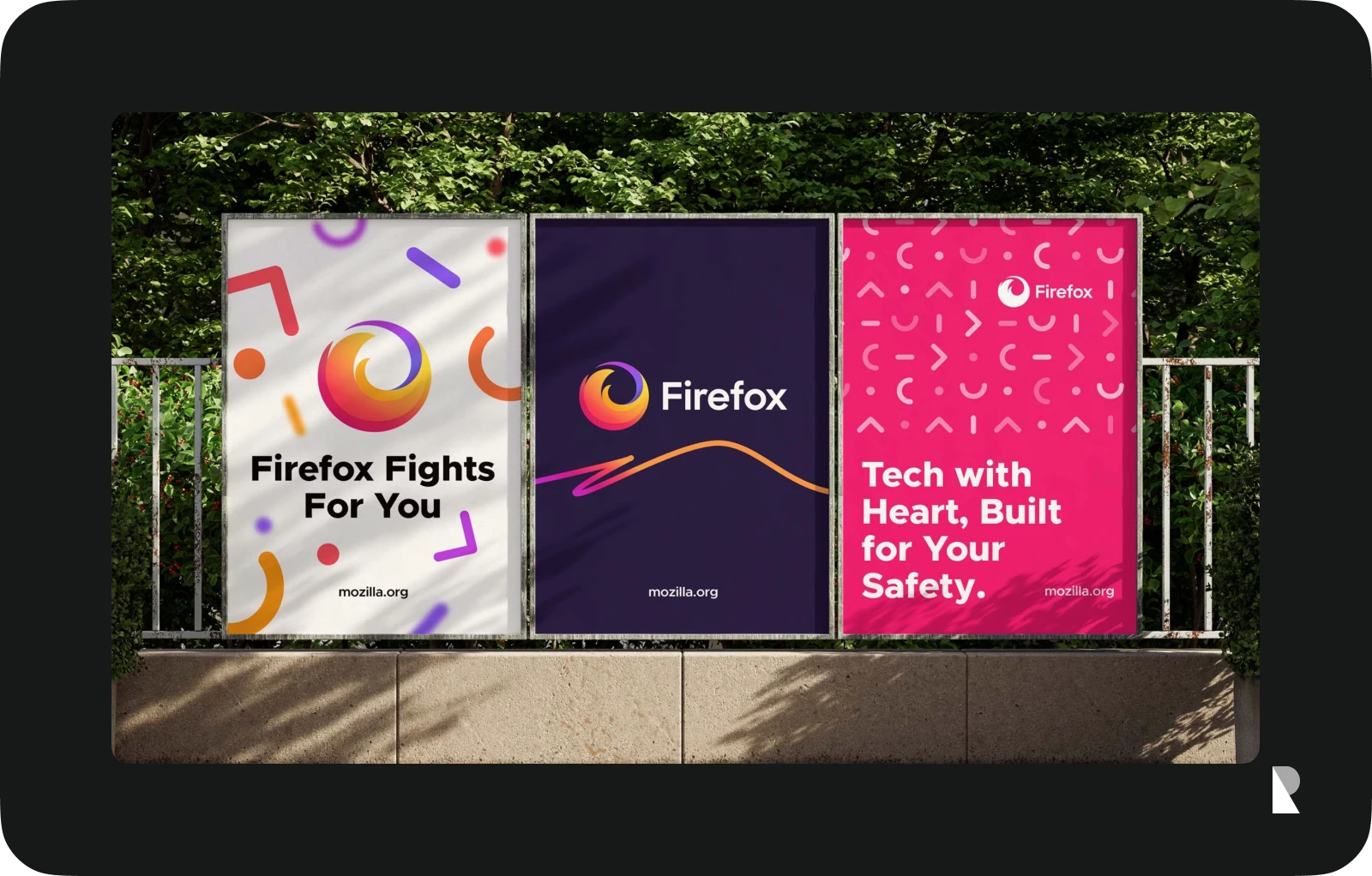
Like every other type of brand imagery, brand texture and patterns are unique graphical details aligned with brand visual identity. They reflect the company's personality and reinforce its message delivery, making interactions meaningful, memorable, and authentic.
The diversity of textures and patterns allows the brand to demonstrate its unique traits, values, and behavior patterns. When chosen wisely, they empower the narrative, create a compelling storytelling experience, and differentiate the company from others.
How to Choose Brand Imagery?
Brand imagery comes in all shapes and sizes to meet the company's diverse marketing, advertising, and branding requirements and the target audience's aesthetic preferences and technical environments. It is crucial to select them correctly to enhance the efforts to refine the company's market position and deliver the brand message.
Top brand design companies usually take five steps to make an informed decision and choose the right brand imagery for a client's campaign.

Match brand values and audience
To build trust and credibility with your audience, it is crucial to align your brand values with your customers' values, so that your brand imagery speaks with them in the same language and tugs at their heartstrings.
The first step is to ensure that photos, videos, logos, typefaces, and other elements align with your target market's aesthetic preferences and expectations. Start by thoroughly understanding your brand values and then inspecting and analyzing your clientele's characteristics to gather relevant knowledge.

Semrush – a platform for inspecting the target audience's preferences
Set brand guidelines for imagery
Imagery guidelines are approved and consistent rules for selecting the right brand imagery in a particular use-case scenario to achieve specific goals. They underlie visual consistency in the company's presentation, alignment with brand personality, and seamless message delivery regardless of communication channel or touchpoint.
Therefore, devise an imagery guideline, which involves deciding on the preferred image style and version and technical aspects such as size, format, lighting, color, composition, and framing. Think through the usage of specific visual assets.
Plan your imagery budget
With the imagery guideline at your disposal, the time has come to plan your imagery budget. Effectively allocating resources, time, and money during visual content production to align with strategic goals is crucial.
This stage provides a clear financial framework, ensures flexibility in seizing emerging marketing opportunities, offers transparency to stakeholders, and enhances expense monitoring.
Develop a strategy for balancing brand imagery based on the purpose of each item, the company's long-term objectives, and current strategy requirements.
Source brand visuals
The core of compelling storytelling lies in the company's ability to adapt its visual language seamlessly and coherently to the specific context and audience. This maintains consistency in presentation, reinforces positive associations, and increases recall and overall recognition.
Therefore, source the brand imagery in various formats (EPS, SVG, PNG, GIF, JPEG), colors (HEX, RGB, CMYK), sizes (32px, 64px, 128px, etc.), and versions (colored, monochrome, black and white, minified) to provide flawless assistants in multiple campaigns.
Build a visual library
Being intentional about selecting brand imagery for certain situations requires companies to build a well-organized and structured visual library. This centralized repository should include up-to-date branding materials approved by stakeholders. It must also be secure yet easily accessible by various departments, such as designers, marketers, or advertisers.
Using Brand Imagery Across Channels
Brand imagery is used across multiple channels, allowing it to reach the target audience in their comfortable environment. The most popular are Web, social media, marketing, and print.
Brand presentations must seamlessly adapt to ensure coherent and clear message delivery at every touchpoint. Here are several tips for each communication method.
| Channel | Format | Elements | Tips |
|---|---|---|---|
| Web | JPEG, PNG, SVG, MP4, WebM | Logotype, color palette, typography, images, illustrations, photos, layout, website structure, language, and tone | Use web-friendly fonts (in particular, those from the Google repository), HEX colors, graphics in scalable format (SVG), especially for logotype and hero areas, and images optimized for the Web. |
| Social media | JPEG, PNG, and GIF | Logos, color palettes, typography, illustrations, graphics, photos, videos, interactive elements, behind-the-scenes footage, stories, and user-generated content. | Prioritize short-lived, real-time content. Create consistency across channels. Stick to platform-specific formats. |
| Email marketing | JPEG, PNG, and GIF | Logotype, hero images, photos, illustrations, mascots, typography, coloring, signature, user-generated content, infographics, and interactive details like mini games or dynamic effects | Adopt a hyper-personalized approach. Ensure brand imagery looks coherent across various screen sizes and mailboxes. Test everything and create fallbacks. |
| Print media | TIFF, PDF, and JPEG | Logotype, mascot, coloring, fonts, signature, images, photos, infographics, layout, and content structure. | Strive for accurate CMYK color reproduction. Ensure legibility of fonts. Use only professional print services. |
Brand Imagery Examples
Brand imagery is integral to every company with a strong market presence. Consider a couple of top brands' examples to see how they employ their visual identity across communication channels to ensure their audience perceives their personality in a meaningful and memorable way.
McDonald's
McDonald's is among the most impressive examples of well-elaborated brand imagery and practical application across various communication channels. Not only does its iconic logotype and coloring adorn restaurants' interiors and exteriors, but also its website, social media accounts, mobile application, email marketing campaigns, brochures, and even packaging and merchandise.
Instilling key traits of their personality, vision, and mission in every touchpoint has allowed the company to create a powerful brand identity with a strong market position and instant recognizability.

IKEA
IKEA is another excellent example of professionally-crafted and well-used brand imagery. It reflects the company's personality and fuels positive associations with its vision. Iconic blue and yellow coloring, along with the typeface, make the leading Swedish furniture manufacturer instantly recognizable, whether you are inside their enormous brick-and-mortar stores or on their engaging website.
Their brand imagery perfectly reflects their friendly, welcoming, relatable personality, Swedish roots, and love for affordability and practicality, resonating with the target audience.
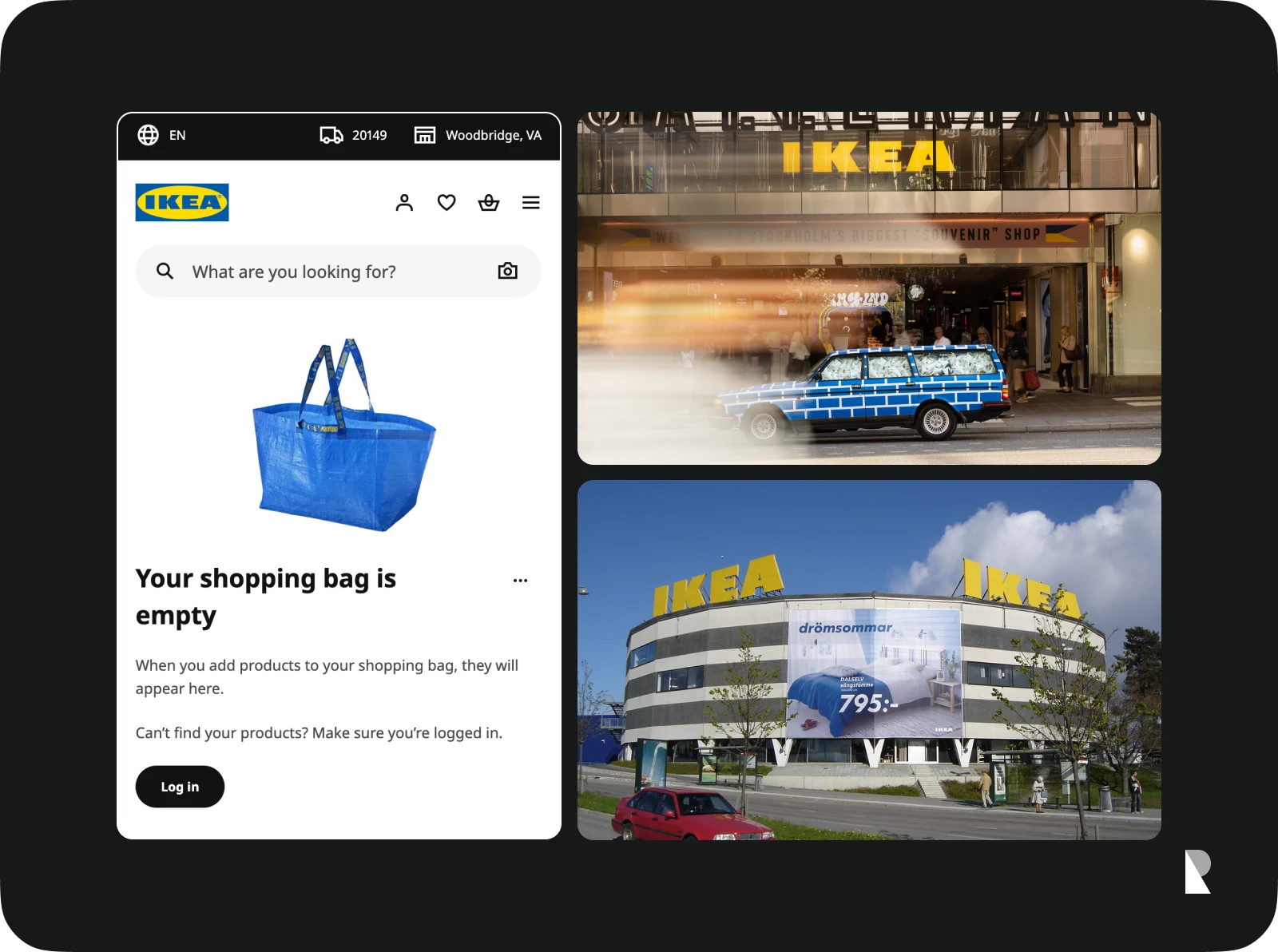
Conclusion
A strategic and coherent visual identity is essential to ensure the company's values, vision, and mission remain recognizable across all communication channels and touchpoints. It underlies growth and development and fuels customers' trust and loyalty, crucial for retention and competitive advantage.
Besides consistency, well-advised brand imagery is clear, relevant, authentic, distinctive, meaningful, and memorable. To achieve these qualities, professional brand agencies create a library of varied visual elements that reflect the company's personality, naturally adapt to customers' technical environments, and support diverse marketing, advertising, and branding endeavors. From logos to textures to infographics, brand imagery ensures that the communication between the company and its target audience remains consistently aligned with the brand.
Sep 12, 2025
